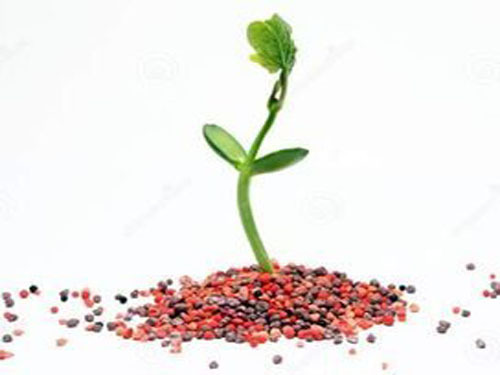
The Central Economic Work Conference demonstrated from nine aspects such as consumer demand, investment demand, exports, production capacity, production factors, market competition, and resources and environment that China's economy has entered a new normal. So what is the new normal of the fertilizer industry? The author believes that this is mainly reflected in the following six aspects:
First, excess capacity. In the past, China’s fertilizer production was seriously insufficient, but after entering the 21st century, China’s chemical fertilizers have entered a stage of great development, especially in recent years. Fertilizer plants have been built in resource-rich regions such as Inner Mongolia and Xinjiang, and nitrogen fertilizer and phosphate fertilizer production capacity have been seriously excessive. It is estimated that in 2014, the market demand for urea (including domestic demand and external exports) was about 67 million tons, and the overcapacity was about 15 million tons, resulting in a downturn in the urea market. The overcapacity of phosphorus compound fertilizer is equally serious. As of the end of 2013, the proportion of overcapacity of diammonium and monoammonium in China exceeded 100%.
Second, the impact of exports on the market is growing. Due to the overcapacity of domestic chemical fertilizers, to absorb excess production capacity, exports have become an inevitable choice, and export factors have an increasingly greater impact on the fertilizer market. If the international market is good and the volume of exports is large, the domestic market may go well. Conversely, if the international market conditions are poor, or because of high tariffs and other reasons, if the exports cannot go out and are squeezed into the domestic market, then the domestic market cannot improve. .
Third, the slowdown in the growth of fertilizer demand may lead to zero growth or decline. Fertilizer demand has moved away from the era of high growth in the past. With the increase in the level of scientific fertilization and the advancement of urbanization, the transfer of agriculture to industry will significantly slow down the growth in fertilizer demand in the future, with zero growth or even decline in some places. The Ministry of Agriculture has recently set a clear goal: to achieve zero growth in pesticide and fertilizer use by 2020.
Fourth, the farmer's fertilizer structure has changed. With the changes in agricultural planting structure and the large-scale use of mechanization, the fertilizer structure of farmers is also changing. In the past, farmers used more low-concentration chemical fertilizers, and now they are more inclined to high-concentration, slow-release, and controlled-release fertilizers, which saves time and effort. In the past, farmers used more common chemical fertilizers, and now more and more new types of fertilizers such as water-soluble fertilizers, organic-inorganic compound fertilizers, and biological fertilizers are becoming more and more popular.
Fifth, the compound fertilizer becomes a trend. In the past farmers used urea, ammonium bicarbonate, superphosphate, potassium chloride, and other simple fertilizers. Most of them now use compound fertilizers. The first fertilization of compound fertilizer is equivalent to putting all three kinds of nitrogen, phosphorus, and potassium fertilizers to completion, saving time and labor, and at the same time, the utilization rate of compound fertilizer is higher than single fertilizer. In the past 20 years, the growth rate of application amount of compound fertilizers in China was significantly higher than that of nitrogen fertilizers, phosphate fertilizers, and the total application rate of chemical fertilizers. In 1980, the compounding rate of chemical fertilizers in China was only 2.1%, but in 2010 it increased to 32.3%. The compounding rate of chemical fertilizers in China is continuously increasing and is expected to exceed 50% in the future.
Sixth, soil testing and formula fertilization is greatly advanced. Fertilizers are inseparable from agricultural production, but excessive use of chemical fertilizers will not only cause waste of resources but also pollute the environment. In this case, soil testing and fertilizer application based on the characteristics of the soil and the amount of fertilizer required by the crop are the best choices. According to the statistics of the agricultural sector, in the first half of 2014, the country’s main food crops had a formula fertilizer consumption of 5.3 million tons (reductions), and an area of ​​360 million mu (times), which was an increase of 17.8% and 20% respectively over the same period of the previous year; formula fertilizer accounted for It is about 40% of the total amount of fertilizers applied to the main food crops.
SPCP120
Solid-phase synthesis, as the key process in the production of Bio-pharmaceuticals, is widely used for the synthesis of peptides, deoxyribonucleic acid (DNA) and so on. The synthesis method is to bound the functional group such as methyl, hydroxymethyl on a bead, which primiarly is polystyrene microsphere with low crosslink.
excellent batch to batch reproducibility and consistency:The beads are strictly controlled by unique technology and verified SOP from the first step; that can guarantee the consistency of the particle size and crosslink degree to achieve the excellent batch to batch reproducibility in the scale production.
Resins For Solid Phase Synthesis SPCP120
Resins For Solid Phase Synthesis Spcp120,Alternative For Mitsubishi Sp20Ss,Replace C18 Silica Gel,Spcp120 Solid-Phase Synthetic Resin
Nanjing Genshine Bio-technology Co., Ltd , http://www.genshine-bio.com